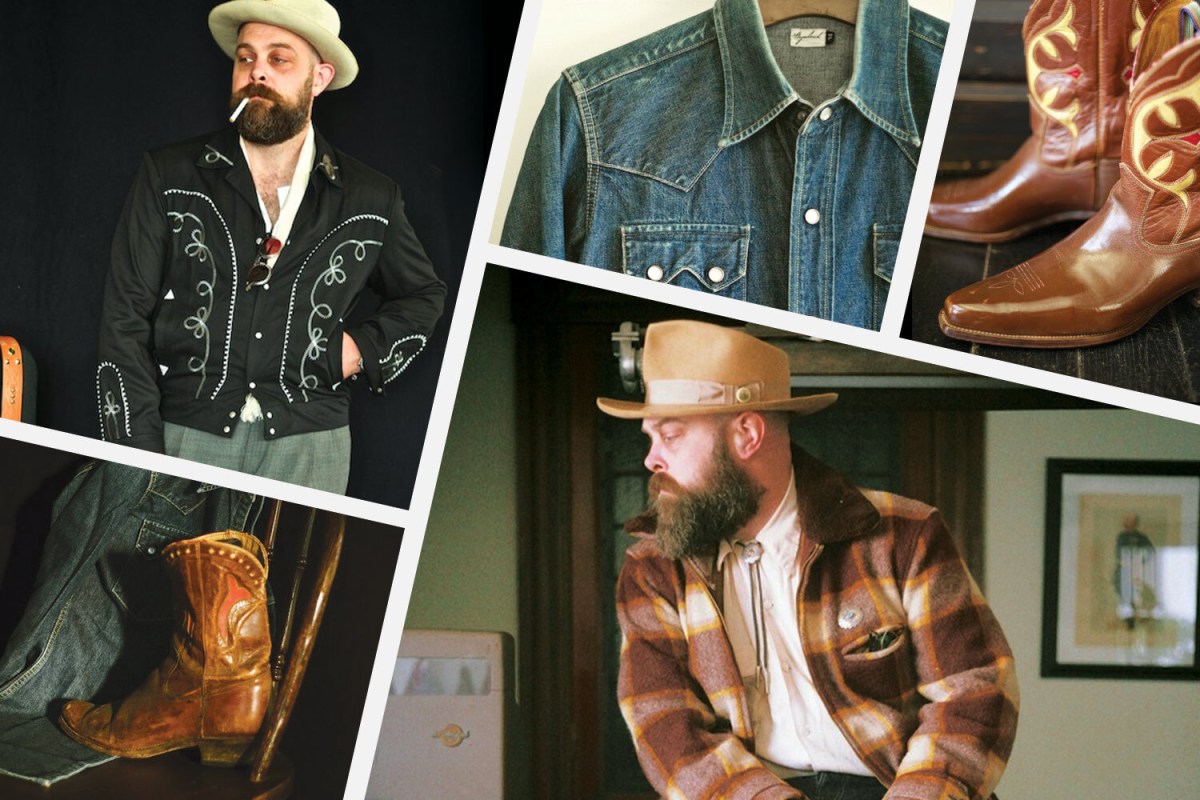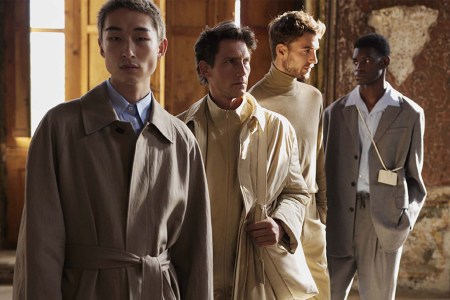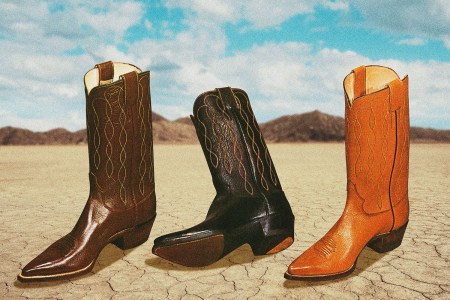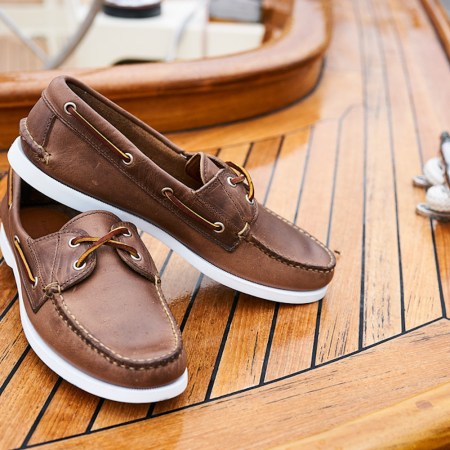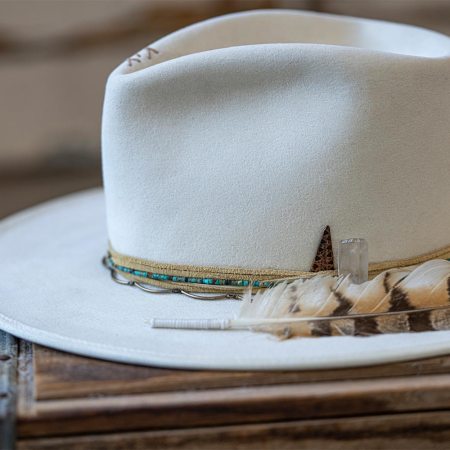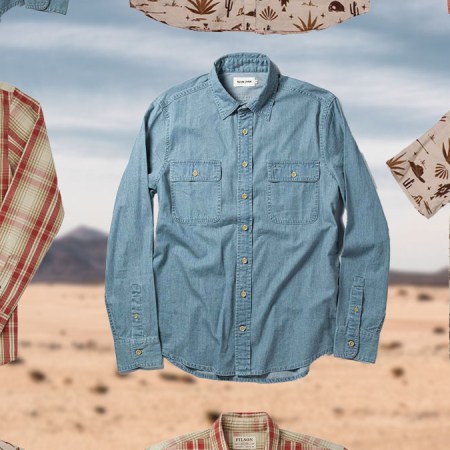Western wear has long felt like a forbidden fruit. I love head-to-toe RRL looks as much as the next menswear obsessive, but the thought of actually slipping into a fringed deerskin jacket or genuine cowboy boots fills me with dread. Would I not be immediately identifiable as an insecure phony, more Owen Wilson in The Royal Tenenbaums than Robert Redford in Butch Cassidy and the Sundance Kid?
And yet, Western wear is proliferating at the same rapid clip as Yellowstone spin-offs, with established designers from Tom Ford to Celine Homme riffing on its tropes as rising labels including Bode and Savas play with its DNA. Surely, there must be a way for non-ranch hands to appropriate the style without falling into the absurd.
“The key is not to put labels on things,” says Wythe founder and native Texan Peter Middleton, whose Americana-inspired brand comes with a healthy dollop of Western flavor. “As humans, our want is to categorize things, but I think that causes a lot confusion.”
The Best Places to Buy Designer Menswear Online
Interested in leveling up? Here’s where to shop.Instead of fixating on certain items as “Western” — and psyching yourself out in the process — Middleton recommends mixing them into your typical assortment. “If you have a denim pearl snap and you’re just treating it like any other shirt, it’s a lot easier to wear than if you have your closet divided up by section.”
Pearl snaps, denim or otherwise, happen to be a signature item for Wythe, which offers them in fabrics ranging from washed flannel to satin. Those on the fence about incorporating a rodeo favorite might wear them in a more approachable fashion, as an overshirt above a ribbed tank or a tee.
“I think it’s just a little bit more unconventional,” Middleton says of the move.
Sid Mashburn, whose eponymous chain of retail stores trade in classic American sportswear and Italian-made tailoring, reserves a soft spot for Western threads. “We think there’s a place for it in every guy’s wardrobe,” Mashburn says. “It’s really an American style.”
But the Mississippi-born designer, whose own “cowboy spell” peaked during a horse riding-period in middle school, recognizes the dangers of the aesthetic. “You don’t want to look like a drugstore cowboy,” he warns.
Mashburn’s solution has been to make Western-influenced items with fabrics or features not typically associated with the look. So, while you can buy his pearl snap in a traditional light-washed chambray, it’s also available in a striped oxford fabric more readily associated with New England than New Mexico.
“If you put either of those underneath a tweed jacket, or any jacket that’s got some surface interest—that’s not too polished or pure blazer-looking—those things go together like pancakes and syrup,” Mashburn says of their utility.
Other examples of this hybrid approach include Mashburn’s Tex trouser, an improbable mash-up of 1960s golf trousers and Western pants complete with flapped, curved pockets at the rear, and the Vaquero roper, a kind of cowboy boot-light equipped with a studded Dainite sole, a feature more commonly seen in Chelsea boots.
“I think the only thing in my wardrobe that I might really steer shy of is probably a bolo tie and a cowboy hat,” Mashburn says of his few strict taboos. “Otherwise it’s all ok for me.”
Now Is the Time to Finally Break in Some Cowboy Boots
Whether you want to look like an urban cowboy or a western dandy, we’ve got you coveredFor others, the wearability of Western wear comes down to the exact era it draws from. Ethan Newton, co-founder of the vintage-inspired international menswear brand Bryceland’s, finds his sweet spot in the 1940s.
“From pearl snaps on gabardine to fancy inlay on a pair of Pee Wee boots, they are working clothes given a little more overt style and color,” he says of that period’s output. “There was something about the era of the ‘40s that feels a little more modern than other eras of Western wear, a little more festive.”
That vintage festivity is present in Bryceland’s “Cowboy Label” range, which alongside a more conventional denim iteration features sawtooth Western shirts in bright red cotton and even a silky “buttermilk” rayon.
Other Cowboy Label offerings, like a cropped Type 1 denim jacket or the high-waisted 133 jean based on a pant from 1937, straddle the Western wear/workwear divide—which isn’t an accident.
“In approaching Western wear, we try to maintain the idea of garments that are workwear, but with a little more panache and dandyism than other forms of utilitarian clothing,” Newton says.
But what about that leather avatar of the American West, the cowboy boot? What could be said to a city slicker who’s never been west of Ohio but secretly thrills at the thought of a stacked heel and hand-stitched cording?
“I would ask them if they own a pair of jeans,” says Middleton. While Wythe produces some capital-W Western boots with a fourth-generation maker in Mexico, he doesn’t believe owning a pair of spurs is a prerequisite.
“Do you have jeans? Do you have a T-shirt? Start with that and then go from there.”
And that’s how Western wear was won.
This article was featured in the InsideHook newsletter. Sign up now.
